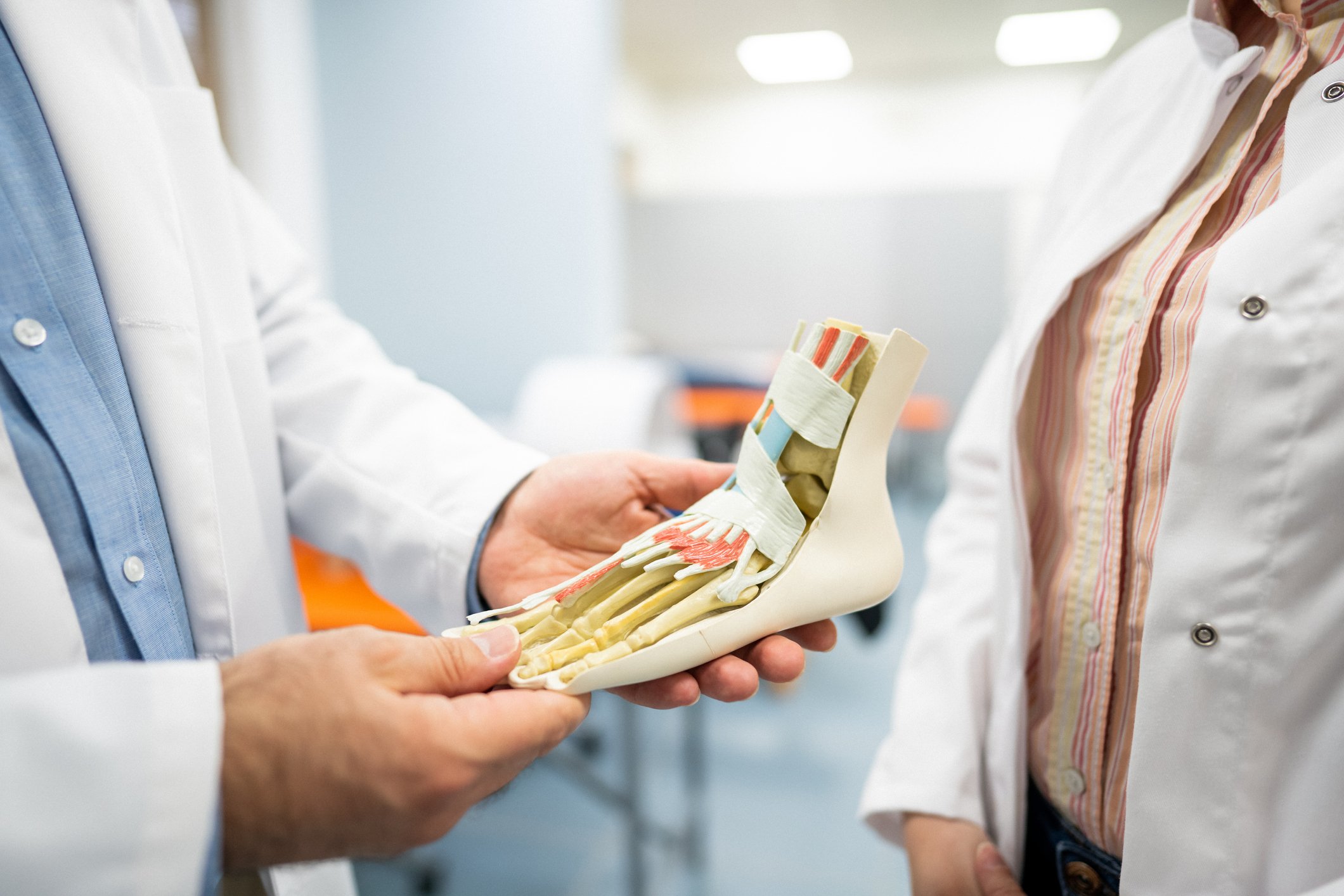What Does Mallet Toe Look Like?
What is mallet toe? A mallet toe deformity is a medical condition often used interchangeably with “hammertoe” or “claw toe,” but there is a subtle difference between all three of these. A mallet toe is a contracture of the joint at the end of your toe (typically second or third toe) and is a result of a tendon imbalance in the toe. Mallet toes can become problematic as the toe begins to rub against the shoe, often resulting in painful callouses or corns.
If the toe becomes permanently bent out of position, it can also lead to the loss of mobility for a person and may become a constant source of pain. In the case of mallet toe, the condition generally occurs in the second toe, which is right next to the big toe, and that's because it's the longest of the four smaller toes.
There are two parts of the foot that affect mallet toe, the first being the distal interphalangeal joint (DIPJ), and the second being the flexor digitorum longus (FDL). The DIPJ is the toe's last joint (i.e., the one closest to the toenail), and the FDL is a muscle that begins in the area of the shin and runs all the way down to the four smaller toes. This muscle can become too tight, and cause the toe joint to be bent upward, resulting in mallet toe.
Appearance of mallet toe
You will be able to recognize mallet toe because of the distinctive upward curling of a particular toe. It will seem to be locked into position abnormally, and unable to be straightened out. If you were to exert pressure on the toe to straighten it out, you would likely feel some level of pain, because so much contraction has taken place that the tendons and tissues in the area have constricted to the point where it will be painful to exert pressure on them.
How mallet toe forms
Mallet toe can be formed in much the same way that hammertoes develop, which is generally some force that causes the toe to be repeatedly forced upward rather than lying flat. Arthritis can be a condition that promotes this upward curling, and so can muscle or bone imbalance. Foot bones that are too short, or muscles in the area which are excessively weak, can lead to the development of mallet toe. If you have sustained injury to one of your smaller toes, that can promote the development of mallet toe. Wearing shoes that have too little room in the toe area can also promote mallet toe, high-heeled shoes should be avoided, especially for prolonged periods.
How to fix mallet toe
If your mallet toe is in a relatively early stage of development, your physician may recommend treatment options that can involve inserting toe pads on corns or calluses and trying to stretch out your toes frequently. You can also insert orthotics to relieve pressure on the affected toe, and you can wear shoes that have extra room in the toe area. Inflammation can be relieved by steroid injections if your doctor recommends it for you.
In severe cases, mallet toe surgery may be indicated by your surgeon. Paragon 28 developed the TenoTac® Soft Tissue Fixation System to address the deformity while avoiding fusion. This is a minimally invasive surgical procedure that that requires two small incisions. The length of these incisions is much less than those made in traditional surgery which may preserve physical appearance and the potential for earlier return to activity. The procedure leaves an implant in place that is designed to correctly position of the toe and promote normal anatomic alignment.
To learn more about TenoTac® Soft Tissue Fixation System visit our contact page or our surgeon finder to located a surgeon near you.
Important Risk Information
Only a surgeon can tell if the TenoTac® Procedure is right for you. There are potential risks, and recovery takes time. Potential risks include but are not limited to infection, discomfort, or swelling due to balancing and introduction of the implant, loosening of the implant, and loss of correction. Caution: Federal law restricts this device to sale by or on the order of a physician.
For the contraindications, potential complications and adverse reactions, warnings and precautions associated with this device, please refer to the device specific instructions for use at https://www.paragon28.com/ifus.
For additional information on Paragon 28® and its products please visit www.paragon28.com.
References
https://my.clevelandclinic.org/health/diseases/17204-mallet-toes
https://www.mayoclinic.org/diseases-conditions/hammertoe-and-mallet-toe/symptoms-causes/syc-20350839


